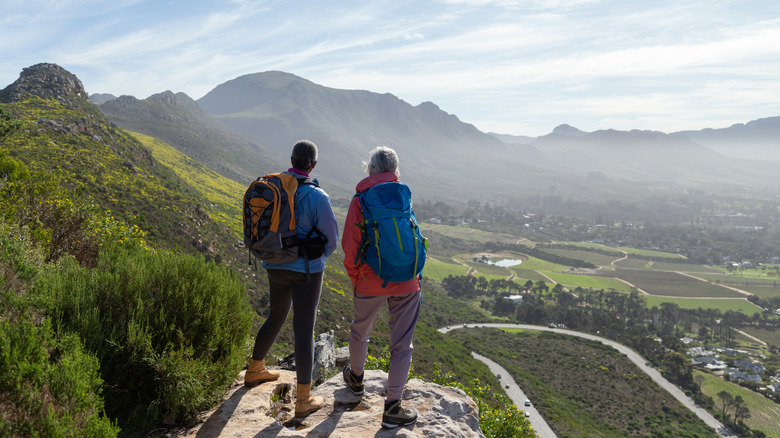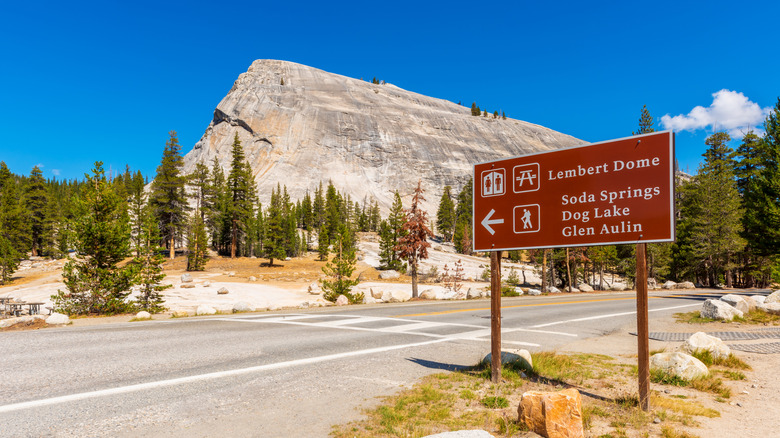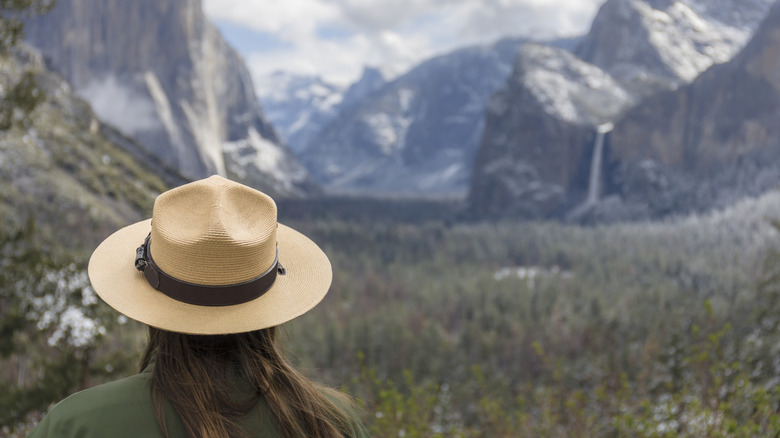The Important Safety Advice National Park Rangers Recommend To Visitors
You will find some of the most beautiful places in America's state and national parks. Each features natural wonders that have their own unique charm from breathtaking waterfalls in Yosemite to stunning rock formations in Zion and enchanting rainforests in Olympic. There is so much to see and do, whether you want to hike iconic trails, swim in huge lakes, or simply drive through to admire some of the best views you'll see in your life. The true heroes keeping the magic of these parks alive are the rangers. There are different types of rangers you'll find working in state and national parks, but one thing they all have in common is that they are here to make sure you have a safe and fulfilling trip. This includes offering safety tips they have gathered from their years of experience.
One of the biggest mistakes tourists make when visiting national parks is not planning well enough. Planning ahead and having a backup plan is the key to any successful park trip. Don't know where to start? There are plenty of resources at your disposal. Before any trip, check out the park's website and the national parks app. Not only will they list out everything there is to see, but they will give you important information about park operations such as reservations and closures. Parks' social media pages are also a great place to get information straight from the source.
Don't miss important details for your national park visit
America's national parks are huge. There are 63 official national parks across the country and hundreds more protected sites within the national parks system. So the first step is to figure out which park you want to visit. Some parks require reservations and spots often fill up quickly. If you miss this important detail, you may be sorely disappointed when you arrive at the gate. Visiting the National Park Service website is a great place to start your research.
Next, do a bit of research and determine when is the right time to go. Parks change from season to season — while the summer is the ideal time to visit most, many parks shine in the off-season with dramatic landscapes and fewer visitors. However, the off-seasons often have a higher risk of extreme weather conditions and closures. A bit of research will help you prepare a back up plan for unforeseen circumstances. Planning in advance also means you can arrive prepared with the right clothing, camping equipment, and other seasonal essentials to stay safe throughout your visit.
Scouring the internet for blogs, news articles, and social media posts is another great preparation step — anything that can tell you more about what there is to discover in the park. Watching TikToks and YouTube vlogs of hiking trails or sites you're interested in seeing gives you a firsthand account of what to expect. Look for packing lists for some inspiration and to make sure you have all the essentials. If you're hiking, AllTrails is a good tool with information such as the difficulty level of the trails, whether they're family- or dog-friendly, and reviews from fellow hikers.
Safety should be your top priority on your trip
Visiting a national park can be so exciting, but no matter how meticulously you've prepared, mishaps can happen. When you find yourself in a less than ideal situation — unexpected closures, sudden weather changes, illnesses, or injuries — the best thing you can do is play it safe. If there's a hike you've looked forward to but you wake up that morning not feeling your best, it's okay to skip the trail and opt for an easier one, or just spend a relaxing day indoors. As beautiful as national parks are, nothing is worth your safety and well-being. If you're unsure on whether or not you're fit enough to hike a trail, ask a park ranger, and they'll tell you everything you need to know to make an informed decision.
Also, keep in mind that humans are not the only living beings exploring the parks. Lots of wildlife call these parks home. Keep a respectful distance from any of the critters you come across. They may seem cute and cuddly, but many animals such as moose, bison, and bears can be dangerous if they feel threatened.
Lastly, and perhaps most importantly, be kind and courteous to your fellow visitors. National parks can get very crowded, especially during the peak seasons. This may mean lots of traffic, difficulty finding parking spots, and lines to take photos at iconic locations. Pack you patience pants and remember that the parks are meant for everyone to enjoy.


